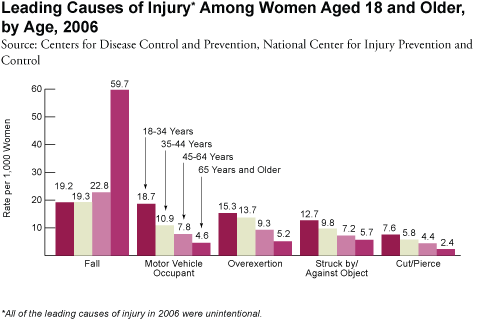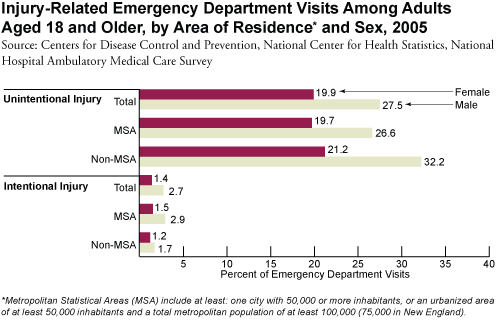
June 19, 2009, 0:00 p.m.
Be on the lookout this week for stories with these bogus memes.
By W. Bradford Wilcox
With Father’s Day almost upon us, expect a host of media stories on men and family life. Some will do a good job of capturing the changes and continuities associated with fatherhood in contemporary America. But other reporters and writers will generalize from their own unrepresentative networks of friends and family members, try to baptize the latest family trend, or assume that our society is heading ceaselessly in a progressive direction. So be on the lookout this week for stories, op-eds, and essays that include these five myths on contemporary fatherhood and family life.
1. THE ‘MR. MOM’ SURGE
Open a newspaper or turn on a TV in the week heading up to Father’s Day and you are bound to confront a story on stay-at-home dads. I have nothing against stay-at-home dads, but they make up a minuscule share of American fathers.
For instance, less than 1 percent (140,000) of America’s 22.5 million married families with children under 15 had a stay-at-home dad in 2008, according to the U.S. Census. By contrast, about 24 percent (5,327,000) of those families had a stay-at-home mom. This means that the vast majority — more than 97 percent — of all stay-at-home parents are moms, not dads.
The focus on Mr. Mom obscures another important reality. In most American families today, fathers still take the lead when it comes to breadwinning: In 2008, the Census estimated that fathers were the main provider in almost three-quarters of American married families with children under 18. Providership is important to protect children from poverty, raise their odds of educational success, and increase the likelihood that they will succeed later in life. Thus, the very real material contribution that the average American dad makes to his family is obscured by stories that focus on that exotic breed, the stay-at-home dad.
2. WOMEN WANT EVERYTHING 50-50
Another prevailing media myth is that contemporary women are looking for fathers who will split their time evenly between work and family life. It may be true for the average journalist or academic, but it is not true for the average American married mom.
Most married mothers nowadays do want their husbands to do their fair share of housework and childcare. But they do not define fairness in terms of a 50-50 balancing act where fathers and mothers do the same thing at home and work. Instead, contemporary mothers take into account their husbands’ work outside the home when they assess the fairness of the division of labor inside the home.
Moreover, most women who are married with children are happy to have their husbands take the lead when it comes to providing and do not wish to work full-time. For instance, a 2007 Pew Research Center study found that only 20 percent of mothers with children under 18 wanted to work full-time, compared with 72 percent of fathers with children under 18. My own research has shown that married mothers are happiest in their marriages when their husbands take the lead when it comes to breadwinning — largely because his success as a provider gives her more opportunities to focus on the children, or balance childcare with part-time work (the most popular work arrangement for married mothers). So, on this Father’s Day, dads who are fortunate enough to hold down a good job and make a major contribution to their families’ financial welfare should take some comfort from the fact that they are likely to be boosting not only their families’ bottom line but also their wives’ happiness.
3. MARRIAGE IS JUST A PIECE OF PAPER
With the rise of cohabitation over the last 40 years, a large minority of American children will spend some time in a household headed by a cohabiting couple. Experts now estimate that about 40 percent of American children will spend some time in a cohabiting household, either because they are born into such a household or because one of their parents cohabits after a breakup. Faced with this reality, many journalists, scholars, and advocates are tempted to minimize the differences between married and cohabiting fathers and families.
But the reality is that, on average, cohabiting fathers do not compare with married fathers. As Sandra Hofferth of the University of Maryland and Kermyt Anderson of the University of Oklahoma found in a recent study, married fathers are significantly more involved and affectionate with their children than are cohabiting fathers. In fact, from their research, they conclude “that marriage per se confers advantage in terms of father involvement above and beyond the characteristics of the fathers themselves.”
Married fathers are also much more likely than their cohabiting peers to stick around. One recent study by Wendy Manning at Bowling Green State and Pamela Smock at the University of Michigan found that 50 percent of children born to cohabiting parents saw their parents break up by age five; by comparison, only 15 percent of children born to married parents saw their parents divorce by age five. Dad is much more likely to stick around if he has a wedding ring on his finger.
This is because, for men, marriage and fatherhood are a “package deal,” as sociologists Frank Frustenberg and Andrew Cherlin observed a number of years ago. By force of law and custom, marriage binds men to their families and gives them a recognizable role to play in the lives of their children. Try as they might, unmarried men typically find it difficult to be a consistent and positive force in the lives of their children.
4. THE KIDS ARE ALRIGHT
Every couple of years, some journalist seeks to revive the myth of the good divorce — often to excuse his or her own bad behavior. Sandra Tsing Loh is Exhibit A this week. In the most recent issue of The Atlantic, she spends several thousand words trying to justify her divorce from her husband of 20 years — a man she admits is a “good man” and “loving father” — under the cover of a sprawling, incoherent, and frankly disturbing review of five books on marriage and family life. (Among other things, the reader is regaled with all too much information about Loh’s private life; we learn, for instance, that one reason she ended up divorced is that she could not replace the “romantic memory of my fellow [adulterous] transgressor with the more suitable image of my husband.”)
Loh claims that her children appear to be doing just fine. Her two school-age girls — aged 7 and 9 — appear to be “unfazed” and “relatively content” in the midst of their parents’ divorce. Who knew divorce could be so easy on the kids?
In reality, Loh is probably deluding herself. The best social science presents a rather different picture than the rosy one Loh is trying to paint. According to research by Sara McLanahan of Princeton University and Paul Amato of Penn State, girls whose parents divorce are about twice as likely to drop out of high school, to become pregnant as teenagers, and to suffer from psychological problems such as depression and thoughts of suicide. Girls whose parents divorce are also much more likely to divorce later in life.
Moreover, studies indicate that children experience the most harm when their parents divorce after living together in a low-conflict marriage for many years (as Loh appears to have done). Why? These divorces come as the most surprising ones to children who thought that their parents had a good-enough marriage.
Though Loh manages to find for her Atlantic piece a bunch of well-educated friends who are also entertaining thoughts of divorce, she is (fortunately) in increasingly rare company. The work of sociologist Steven Martin indicates that since 1980, college-educated Americans have grown less tolerant of divorce, and the divorce rate among this cohort has fallen off sharply. Thus, well-educated readers of The Atlantic are unlikely to take Loh’s misleading and self-serving essay to heart.
5. DADS ARE DISPENSABLE
The final myth propagated by journalists in connection with fatherhood these days is the myth of the dispensable father. Often conjured up in glowing profiles of women who have become single mothers by choice, this myth holds that fathers do not play a central role in children’s lives.
This myth fails to take into account the now-vast social scientific literature (discussed above) showing that children typically do better in an intact, married families with their fathers than they do in families headed by single mothers.
It also overlooks the growing body of research indicating that fathers bring distinctive talents to the parenting enterprise. The work of psychologist Ross Parke, for instance, indicates that fathers are more likely than mothers to engage their children in vigorous physical play (e.g., roughhousing), to challenge their children — including their daughters — to embrace life’s challenges, and to be firm disciplinarians.
Not surprisingly, children benefit from being exposed to the distinctive paternal style. Sociologist David Eggebeen has shown, for instance, that teenagers are significantly less likely to suffer from depression and delinquency when they have involved and affectionate fathers, even after controlling for the quality of their relationship with their mother. In his words, “What these analyses clearly show is that mothers and fathers both make vital contributions to adolescent well-being.”
This is not to say that all journalists get it wrong when it comes to making sense of contemporary fatherhood and family life. This week, for instance, Sue Shellenberger at the Wall Street Journal had a great piece discussing the ways in which mothers serve as gatekeepers for fathers to their children; she also encourages mothers to allow fathers to engage children with their own distinctive style of parenting. Likewise, Linda Carroll at MSNBC has written an incisive story showing that involved and affectionate fathers play a crucial role in steering their daughters away from early sexual activity; in fact, it turns out that dads are more important than moms in protecting their teenage daughters from early sex.
In the coming years, we will need more tough-minded and honest journalism like the kind offered by Shellenberger and Carroll. This is particularly true because the cultural and economic storms of late — e.g., the individualistic turn of contemporary life and the recession — have been eroding the marital foundations of family life in America. Given the social scientific record on fatherhood, marriage, and family life, the United States could use more journalists who are willing to confront hard truths about the roles that fathers and marriage play in advancing the welfare of our nation’s most vulnerable citizens, our children, and the cultural, economic, and legal forces that are now undercutting marriage and fatherhood in America.
— W. Bradford Wilcox is a professor of sociology at the University of Virginia and a senior fellow at the Institute for American Values.




No comments:
Post a Comment